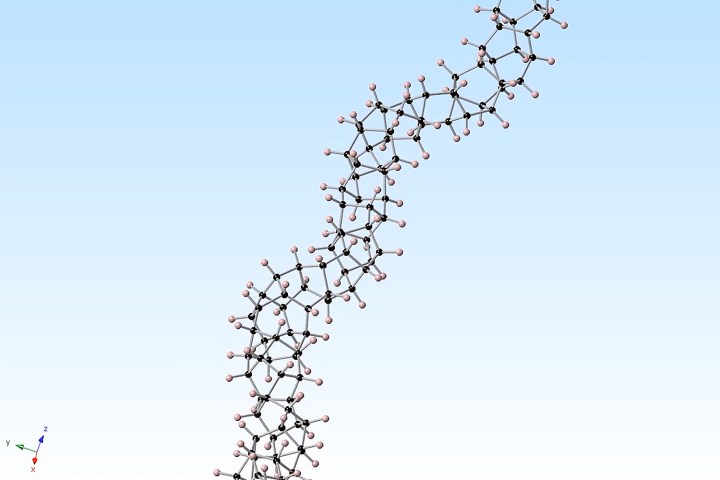
Excited by the discovery of diamond nanothread, Haifei Zhan of Queensland University of Technology in Australia decided to look more closely at the properties of the material and see how it could be used. One concern about diamond nanothread that Zhan explored is the material’s brittleness, which may cause it to shatter under any type of force. To see if this concern was legitimate, Zhan and his colleagues modeled the thread material using large-scale molecular dynamics simulations to see how it behaves under different conditions.
Much to the team’s surprise, the diamond nanothread was much more versatile than first believed. Depending on how it is arranged on a molecular level, the material can be rigid or flexible. The basic configuration of the diamond nanothread and the most rigid form is created when the molecules are stacked in a line and polymerized under pressure. The flexibility of diamond nanothread arises from a different configuration that includes “Stone-Wales defects” that act like mini-hinges. The more defects a strand has the more flexible it will be. In theory, a materials scientist could dial in the number of Stone-Wales defects and create a strand that was flexible on one end and rigid on the other.
The ability to change the properties of the diamond nanothread makes it extremely interesting to materials scientists, who always are looking for new and exciting materials to work with. According to Zhan, the ductility of the material is “ideal for the creation of extremely strong three-dimensional nano-architectures.”
Zhan’s observations on the diamond nanothread, though, are still based on simulations and not real world tests. There are bound to be some differences between the modeled behavior of the nanothreads and their actual performance. With interest in carbon materials science at an all-time high, it shouldn’t be too long before we see the development of diamond nanothread construction kits and actual measurements of the material in the real world.



